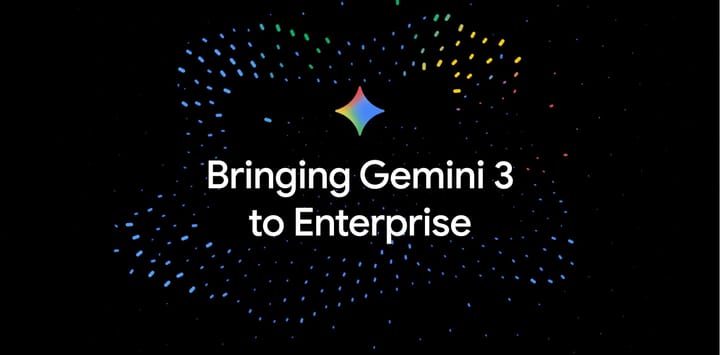OpenAI Launches Atlas Browser, Amid AI Psychosis Concerns

TL;DR
- OpenAI launches ChatGPT Atlas browser amid rising concerns over AI‑induced psychosis
- AI model releases and integration struggles fail to significantly boost productivity or profit
OpenAI’s ChatGPT Atlas: Technical Progress Meets Emerging Mental‑Health and Security Risks
- 27 Oct 2025 – OpenAI launches ChatGPT Atlas, a browser with an “agent mode” and cross‑session memory.
- 27‑28 Oct 2025 – OpenAI releases internal research on mental‑health signals among its 800 M weekly active users.
- 28 Oct 2025 – Lawsuits filed in California and Connecticut allege that Atlas interactions contributed to suicidal behavior.
- 27‑28 Oct 2025 – Security researchers disclose a CSRF‑based vulnerability allowing injection into the model’s persistent memory.
Quantitative Mental‑Health Findings
- Suicidal intent (explicit): 0.15 % (≈ 1.2 M conversations) – Direct references to suicide planning.
- Psychosis/mania signals: 0.07 % (≈ 560 k conversations) – Indicators of delusional or manic states.
- Emotional attachment to ChatGPT: 0.03 % of messages – Persistent reliance that may reinforce unhealthy bonds.
- Clinical support network: >170 clinicians in 60 countries – Advisory input for safety‑model updates.
Emerging Patterns
Scale‑driven risk concentration: Sub‑percent prevalence translates to hundreds of thousands of at‑risk interactions weekly. Safety‑guard regression: Relaxed conversation limits coincide with a rise in reported incidents. Rapid expert mobilization: Clinician network expanded from <100 to >170 members within weeks, indicating an ad‑hoc response. Regulatory pressure: State attorneys general and FTC complaints cluster around the Atlas launch, suggesting perceived causality. Security‑privacy coupling: Persistent memory creates a high‑value attack surface; disclosed CSRF exploits can embed harmful prompts that trigger later.
Security Assessment
Phishing mitigation: Atlas blocks 5.8 % of phishing attempts, far below Chrome/Edge (~50 %). Vulnerability severity: CSRF injection can alter persistent memory, enabling credential theft or unauthorized transactions. Exposure metric: Independent testing shows Atlas users are ~90 % more exposed to successful phishing than traditional browsers. The combination of agentic autonomy and cross‑site memory persistence exceeds current sandboxing capabilities.
Legal and Ethical Landscape
Litigation: Two suits allege weakened safeguards directly contributed to fatal outcomes. Regulatory scrutiny: FTC complaints and state AG warnings indicate forthcoming federal guidance on AI‑driven mental‑health interventions. Ethical consensus: Over 170 clinicians and multiple academic groups criticize “deceptive empathy” and call for transparent disclosure of AI limitations.
Forecast and Recommendations
- 0‑6 months – Reinstate conversation length limits and expand safe completion filters.
- 6‑12 months – Anticipated FCC/FTC rulemaking on AI mental‑health disclosures and mandatory clinician oversight.
- 12‑24 months – Adopt memory sandboxing, per‑origin token verification, and optional “privacy‑mode” without persistent memory.
- Beyond 2 years – Segment “general‑purpose” and “clinical‑assist” models, requiring verified clinician oversight for the latter.
AI Model Rollouts Deliver Modest Gains – Why Hype Outpaces Reality
The Numbers Tell a Cautious Tale
MIT’s pilot survey shows 95 % of enterprise AI experiments miss their projected business value, while the State of AI in Business 2025 report finds only 5 % of tools reach production. The lone bright spot is a SolarWinds study of 60 k ITSM tickets, where AI‑assisted triage trims average handling time by 4.87 hours – an 18 % reduction that translates to roughly $680 k in annual labor savings for a midsized team.
| Metric | Observation |
|---|---|
| Pilot success | 5 % reach production |
| ITSM time saved | 18 % (4.87 h per ticket) |
| Governance coverage | 24 % have formal AI governance |
| Compliance cost | $5 bn globally |
Where Productivity Actually Grows
Incremental gains cluster in repetitive, data‑rich tasks: ticket routing, basic analytics, and document generation. Even in these niches, the overall labor‑hour reduction across sectors is projected to plateau at 2‑3 % by 2028. Companies that confine AI to tightly bounded processes such as finance reconciliation or demand forecasting may see profit‑margin lifts of 1‑2 percentage points; broader deployments risk marginal compression from compliance and integration overhead.
The Cost of a Fragmented Regulatory Landscape
Half of global economies now enforce AI‑specific rules, driving an estimated $5 bn in compliance spend. Regional mandates – for example, the EU’s “trusted AI stack” – are expected to add about 5 % to AI project budgets, even as they improve reproducibility.
Talent Gaps Threaten Return on Investment
Seventy‑five percent of firms will require AI certifications for new hires by 2027, yet only a quarter have internal training pipelines. This mismatch inflates project timelines and erodes early‑stage productivity. Organizations that embed up‑skilling into L&D can accelerate time‑to‑value by 10‑15 %.
Practical Path Forward
1. Target high‑ROI, structured workflows before venturing into unstructured domains.
2. Institute AI governance early – risk assessments, data lineage, and model validation can shave off up to 15 % of pilot failures.
3. Invest in certification pathways to shrink skill shortages.
4. Assign a cross‑functional compliance liaison to stay ahead of regional mandates.
Bottom Line
AI model releases have sparked massive capital inflows, but tangible productivity and profit gains remain modest and uneven. Sustainable impact hinges on disciplined, data‑driven integration, robust governance, and a focus on narrow, high‑value use cases rather than sweeping, hype‑driven adoption.



Comments ()